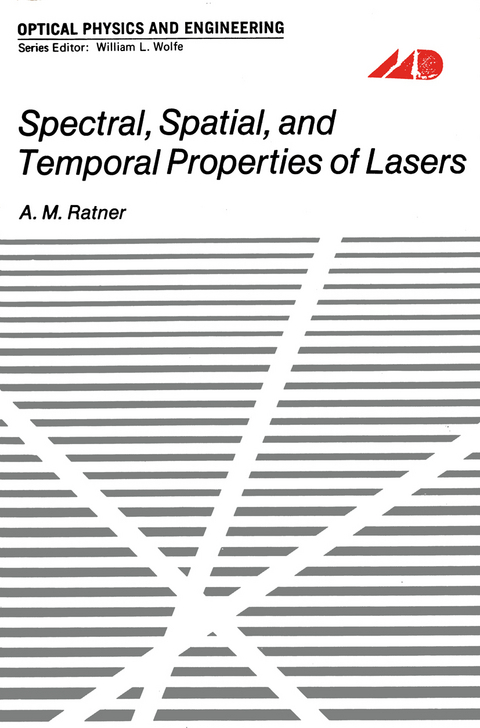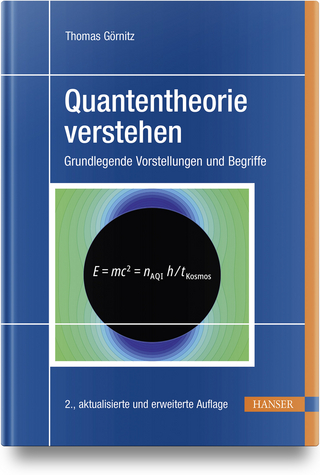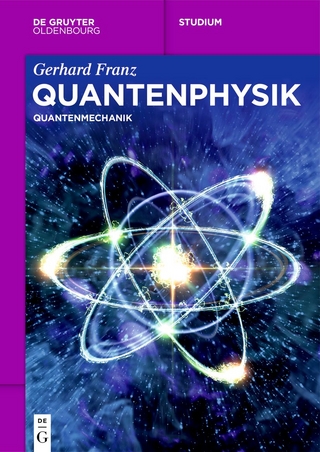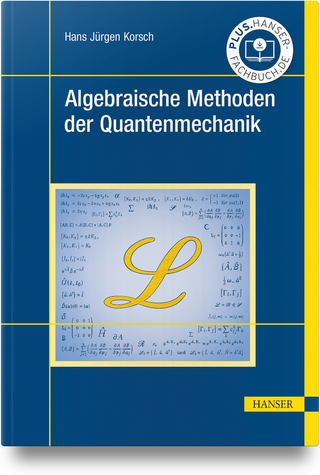
Spectral, Spatial, and Temporal Properties of Lasers
Springer-Verlag New York Inc.
978-1-4684-1928-3 (ISBN)
Basic Notation.- I. Certain Information from Luminescence Theory.- § 1. Absorption and Luminescence Spectra of Impurity Luminophors.- § 2. Nonradiative Transitions Between Electronic Levels of an Impurity Atom.- § 3. Nonradiative Energy Transfer Between Impurity Atoms.- Conclusions.- II. The Threshold and Output Power of a Laser.- § 4. The Effective Absorption Coefficient.- § 5. The Threshold Pumping Power.- § 6. The Output Radiation Power of a Laser.- Conclusions.- III. The Natural Oscillations of an Ideal Resonator (Linear Theory).- § 7. The Oscillation Modes of a Closed Resonator.- § 8. The Modes of an Open Resonator.- Conclusions.- IV. The Transverse Structure of the Electromagnetic Field in a Plane-Parallel Resonator.- § 9. The Equation for the Electromagnetic Field.- §10. The Field Distribution over a Cross Section Having the Shape of a Half-Plane.- § 11. The Intensity Distribution over a Cross Section Having Finite Dimensions.- § 12. The Diffraction Losses.- § 13. The Range of Application of the Treatment. Comparison with Experiment.- Conclusions.- V. Longitudinal Structure of the Electromagnetic Field in a Plane-Parallel Resonator.- § 14. The Longitudinal Mode of a Resonator Having an Infinite Cross Section.- § 15. The Number of Simultaneously Generated Longitudinal Modes.- § 16. The Electromagnetic Field in a Resonator Having a Finite Cross Section.- §17. The Effective Absorption Coefficient.- Conclusions.- VI. A Laser with Concave Reflectors.- §18. The Equivalent Mechanical System.- § 19. Taking Account of the Active Medium.- §20. Cylindrical Mirrors.- §21. Reflectors in the Shape of a Surface of Rotation.- § 22. The Spectral Composition of the Radiation.- § 23. The Transition to a Resonator with Plane Mirrors.- § 24. An OpticalResonator with Lenses.- Conclusions.- VII. Relaxational Intensity Oscillations.- §25. The Kinetic Equations.- §26. The General Picture of Oscillations of Stimulated Emission.- §27. Oscillations Having a Large Amplitude.- §28. Damping of Oscillations and Their Amplitudes.- §29. Range of Applicability and Experimental Data.- §30. Self Oscillations.- Conclusions.- VIII. The Spectral Width of the Radiation.- § 31. The Spectral Composition of the Radiation.- § 32. The Effect of Kinetic Operation on the Spectral Width of the Generation.- Conclusions.- IX. The Threshold Phenomena Related to Microinhomogeneity of the Active Medium.- § 33. Spectral Width of Radition from a Laser with an Inhomogeneously Broadened Luminescence Line. The Basic Equations.- § 34. The Spectral-Broadening Threshold.- § 35. The Equation for the Intensity of the Polarization Components.- § 36. The Second Generation Threshold.- § 37. The Intensity of the Fundamental Component under Conditions when the Second Component Cannot Be Generated.- § 38. The Degree of Polarization of the Radiation.- § 39. Comparison with Experimental Data.- Conclusions.- X. Active Q-Modulation.- § 40. Obtaining a Single Pulse by Means of Rapid Q-Switching.- § 41. Equations for Light Energy in a Resonator with Modulated Q.- § 42. Shape of the Intensity Peak.- § 43. Effect of a Finite Q-Switching Rate and Pump Nonuniformity on the Shape of the Peak.- § 44. Stimulated Intensity Oscillations.- Conclusions.- XI. Passive Q-Modulation.- § 45. The Mechanism of Passive Q-Modulation.- § 46. The Equation for a Passive Optical Shutter.- § 47. A Passive Shutter Open Either Negligibly or Completely.- § 48. Various Operating Modes of a Laser with a Passive Shutter.- Conclusions.- XII. Mode Locking and Ultrashort Pulses.-§ 49. The Electric Field of a Multimode Laser.- § 50. Forced Mode Locking.- § 51. Self Mode Locking.- § 52. Pulse Velocity Inside the Cavity.- Conclusions.- References.
| Reihe/Serie | Optical Physics and Engineering |
|---|---|
| Zusatzinfo | 23 Illustrations, color; XIV, 220 p. 23 illus. in color. |
| Verlagsort | New York, NY |
| Sprache | englisch |
| Maße | 152 x 229 mm |
| Themenwelt | Naturwissenschaften ► Physik / Astronomie ► Quantenphysik |
| Naturwissenschaften ► Physik / Astronomie ► Theoretische Physik | |
| ISBN-10 | 1-4684-1928-5 / 1468419285 |
| ISBN-13 | 978-1-4684-1928-3 / 9781468419283 |
| Zustand | Neuware |
| Haben Sie eine Frage zum Produkt? |
aus dem Bereich


